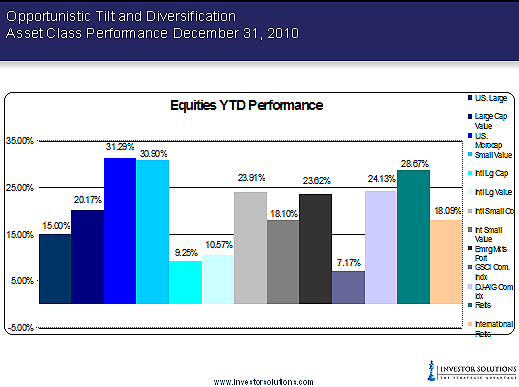The Myth of Investment Diversification Why Mutual Funds Are Bad
Post on: 7 Июнь, 2015 No Comment

When it comes to the tenets of proper investing and personal finance, some rules have been discussed so often that even non-experts know them: Do not get deep into debt, save money for a rainy day, buy life insurance, and do not try to day trade. There is one rule, however, that is considered the granddaddy of all investing maxims: Diversify your investment portfolio. Or as the saying goes, Do not put all your eggs in one basket.
But let me ask you a question: What if all the people who say to diversify are actually wrong?
The Birth of Investment Diversification
The idea that you should not put all your eggs in one basket may be a common sense rule. But ironically, most investors prior to the 1980s not only did not follow it, they were not even encouraged to do it. In the 1980s into the 1990s, the popularity of 401k plans. IRA accounts. and the record number of middle class Americans entering the stock market helped push the idea as a marketing concept to sell mutual funds .
In the 70s and 80s, investing in the stock market meant buying stocks that was the realm of the affluent and the wealthy. Main Street America could not afford the stock commissions of that era. No, mutual funds were the only way the average American could get in on the growth potential of the stock market.
One-hundred dollars would not buy you many shares of IBM not after commissions. However, allocating $100 each month into a mutual fund was something a working class American could do that was one major selling point. The other was a mutual funds diversified setup. It was a perfect selling tool: $100 each month buys you an investment in many companies, but if one goes down, your risk is spread out. Therefore, in a downturn, you cannot get hurt as badly.
This proved to be a sound sales pitch and as many people who had money in the market during the dot-com bubble burst in 1999 and the end of 2008 can tell you, not true. Diversification, in theory, is perfect, but in reality there is a price to pay.
Watered-Down Returns
Imagine the perfect glass of iced tea: It has the right sweetness and a perfect hint of lemon. Now, imagine if you mixed the glass of tea with a gallon of water. Do you want to drink some now? That, in a nutshell, is a mutual fund.
Mutual funds suffer from over-diversification. Regulations cap the money a mutual fund can invest in any one company: Under the Investment Company Act of 1940 that governs mutual funds, a fund cannot have more than 25% of its holdings in any one security. The other 75% must be divided among at least 15 different securities so that none of them represent more than 5% of the total fund. Furthermore, none of those 15 securities can own more than 10% of the stock of any one company also owned by the mutual fund company.
This means that any positive growth in the upside of the market will happen at a slow pace. There is not enough money in one stock, or even a few stocks, to fuel fast growth (profits). That does not protect you, however, from the downside.
As many banged-up retirement funds can showcase, the large diversification of the fund does not protect you from sharp declines in the market. A mutual fund that has 20 companies in their fund is still in the market. Large downturns in the stock market, such as the one the country experienced in 1999, affect the whole market. Therefore, every single stock in the fund goes down, and the mutual fund goes down too.
The rule of the market is that downturns happen more sharply than upswings. This means you get slow upside growth and rapid downside losses.
The Richest People Are Not Diversified
Bill Gates, Warren Buffett. and Michael Dell: What these three famous entrepreneurs have in common is not just their billionaire status it is that none of them are diversified (or, at least, not greatly). Their extreme wealth is the result of holding stock, primarily in one company.
It is true that they own the stock of companies they founded and ran, but they are a perfect illustration of the power of concentration. The quickest and the fastest way to wealth is when you own concentrated positions. When the market moves, you make the most money when you own many shares in one or a few positions, as there is more leverage with concentration.

The flaw in this strategy is that when the market goes down, you will lose a lot more. However, there are strategies available to mitigate such losses including having a portfolio that is truly diversified and not just invested in a range of stocks, and using financial derivatives like options to protect against market downturns.
The point here is that no one will come close to Gates or Buffet, investing $100, $200, or even a $10,000 dollars a month into a mutual fund. There is not enough concentration in the fund, and your returns will likely reflect that.
Effective Diversification
Your mutual fund gives you the illusion of diversity. The only true ways to be diversified are to have money invested in different types of security classes, or to a lesser extent, different sectors. In other words, to be truly diversified, your investment needs to be spread out among stocks, bonds. gold. currency, and commodities. If you are not doing that, then you are not diversified.
Final Word
Fear of loss is the main reason why most people accept the rule of diversification. No one wants to lose money, not even Warren Buffet. His number one rule of investing is dont lose money. His second rule is dont forget rule one. It is a cute line, but the rub is in how to do it.
History has shown that diversification has not saved many portfolios. In fact, the way it is practiced today makes it more likely, not less likely, that you will take a substantial loss at some point. The truth is that you cannot avoid losses. You will take losses at times in your investments, whether they are diversified or not.
The trick is in not losing too much, or too often, and doing that can be simple. Through the use of effective diversification money invested in stocks and a little in something the opposite of stocks, like bonds, or using covered calls you can lower the risk to your investment portfolio a great deal.
What tips do you have for reducing your investment risk?














